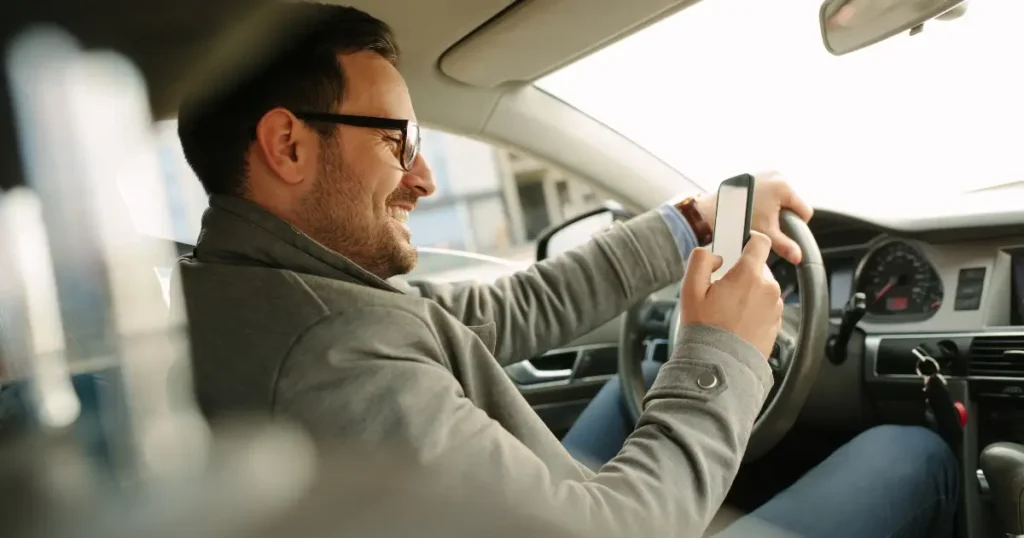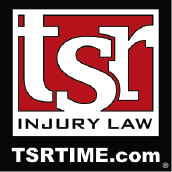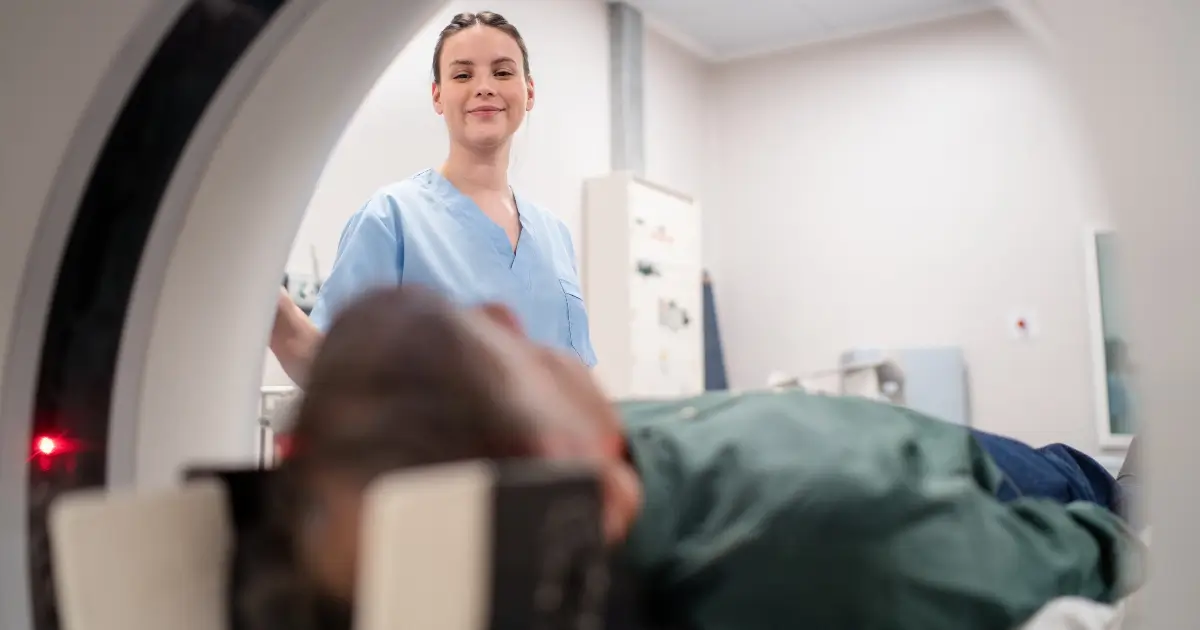
It’s hard to drive anywhere in the Twin Cities these days without seeing someone glance down at their phone behind the wheel. Whether it’s a quick reply at a stoplight or scrolling TikTok in bumper-to-bumper traffic on 94, distracted driving is everywhere—and it is still one of the leading causes of serious crashes in the Twin Cities and across Minnesota. Despite hands-free laws and constant reminders about the dangers, texting while driving remains a deadly habit that puts everyone on the road at risk.
Texting and driving continues to be one of the most dangerous forms of distracted driving today. Despite increased public awareness campaigns and stricter laws in Minnesota, drivers continue to send messages, check social media, and browse the internet while operating vehicles. This high-risk behavior leads to tragic and preventable crashes, causing severe injuries, and fatalities in the Twin Cities and throughout the state. Just one split-second decision to check a text can permanently alter someone’s life.
TSR Injury Law brings over 25 years of experience representing injured crash victims, including those who were injured by drivers texting behind the wheel. We have seen firsthand the devastating impact these preventable crashes have on victims and their families. When you entrust our law firm to manage your case, we fight tirelessly to secure the compensation you deserve.
Call: (612) TSR-TIME to talk to a TSR Injury Law attorney today. We want to help you!
What Counts as Texting and Driving in Minnesota?
In Minnesota, texting and driving involves reading, composing, sending electronic messages, or accessing the internet on a wireless device while you are driving. Drivers are prohibited from sending text messages, emails, social media posts, or browsing websites at any time behind the wheel – even when stopped at traffic lights or stop signs.
The law applies to all electronic communications, not just SMS messages, making any phone-based typing or reading while driving illegal throughout Minnesota.
How Common Are Distracted Driving Crashes in Minnesota in Recent Years?
Distracted driving, including texting, remains a serious problem across the state. Minnesota Office of Safety reports that from 2019-2024 there were close to 30,000 distracted driving crashes, approximately 29 deaths, and 146 life-altering injuries each year.
These statistics highlight how frequently drivers continue to engage in this dangerous behavior despite growing awareness of its risks.
What Minnesota Laws Prohibit Phone Use While Driving?
Minnesota enacted its Hands-Free Law in August 2019, making it illegal for drivers to hold phones or electronic devices while operating a vehicle. The law specifically prohibits reading, writing, or sending text messages or emails while driving, even when temporarily stopped in traffic or at a stoplight.
Drivers caught texting face fines starting at $100 for a first offense and up to $300 for subsequent violations, along with potential increases in insurance premiums. If this violation leads to a crash that causes severe or fatal harm to others, that offending driver may face more severe legal penalties, including felony charges, ranging from reckless driving to vehicular manslaughter.
Five Ways Texting and Driving Affects Road Safety Behind the Wheel
Texting while operating a motor vehicle creates multiple dangerous conditions that significantly increase crash risk. Each form of distraction compounds the danger to everyone sharing Minnesota roads.
Texting or Reading Messages Takes Your Eyes Off the Road
Texting pulls your eyes away from the road for an average of 4.6 seconds per text. At 55 mph, this means traveling the length of a football field essentially blindfolded, creating substantial risk to everyone around you on Minneapolis streets.
Typing Messages Takes Your Hand Off the Wheel
Typing messages requires removing at least one hand from the steering wheel. This reduction in physical control becomes especially dangerous on winding roads or during emergency situations requiring quick reactions.
When Reading or Typing Texts You Are Blind to Traffic and Potential Crash Risks
Your brain cannot fully focus on two complex tasks simultaneously. When composing or reading messages, your mind diverts crucial attention away from driving, processing traffic signals, and monitoring surrounding vehicles.
Texting While Driving Slows Your Reaction Time By Up to 30 Percent
Studies show texting while driving decreases your reaction time by as much as 30 percent. This delay is often the difference between avoiding a crash and causing one, particularly in rush hour traffic or when driving through school zones.
Texting and Driving Creates Impairment Similar to Driving Drunk
Engaging with a phone creates similar impairment levels to driving while intoxicated. Drivers who text are less able to maintain proper lane position, follow at safe distances, or respond appropriately to changing road conditions. When drivers look back at the road after texting to see a road hazard, they may swerve and lose control, sometimes causing them to end up in oncoming traffic.
What Are the Most Common Crashes Caused by Texting and Driving?
Texting and driving creates distinctive and predictable crash patterns that traffic safety experts or accident reconstruction specialists can often identify even before investigating phone records. These are the common crashes that may occur because of someone texting and driving:
- Rear-End Collisions: These crashes occur when texting drivers fail to notice stopped traffic ahead. The texting driver may not have any time to brake before rear-ending the vehicle in front.
- Lane Departure Crashes: When texting drivers look at their phones and away from the road, they often drift into neighboring lanes, into oncoming traffic, or off the roadway entirely. When texting drivers drift out of their lane, it may often lead to side-swipe crashes, head-on collisions or rollover crashes.
- Intersection Crashes: Drivers who text often miss stop signs, traffic signals or yield signs, causing severe T-Bone crashes or head-on collisions. These crashes often occur at higher speeds and are more likely to cause catastrophic injuries.
- MVA vs Pedestrian or Cyclists: According to the NHTSA, 2022 statistics revealed that 498 pedestrians and 87 bicyclists were killed by distracted driving. These crashes typically happen when drivers looking at their phones fail to notice vulnerable pedestrians crossing streets or other cars traveling alongside them.
- Fixed Object Collisions: Many texting-related crashes involve drivers striking fixed objects like utility poles, guardrails, or trees after momentarily looking away from the road to check their phones.
How You Can Avoid a Crash Due to Texting and Driving in Minneapolis
You cannot account for the actions of other drivers, but there are still proactive measures you can take to reduce your risk of a crash due to texting and driving.
Key steps you can take to avoid a texting and driving crash includes:
- Put Your Phone Down: Place your phone where you can get to it quickly in an emergency, but out of convenient reach while driving. Ideally, this could be in your center console or glove compartment to remove the temptation to check messages.
- Enable “Do Not Disturb” While Driving: Engage this useful mode on your smartphone before setting out. This feature automatically silences notifications and sends auto-replies to let contacts know you are driving.
- Pull Over to a Safe Place to Use Your Phone: If you really must communicate, find a safe location off the road that is away from moving traffic. If you have a passenger, consider designating that individual to handle any texts that cannot wait, allowing you to continue focusing on the road.
- Install Mobile Apps: You can download an app that is specifically designed to prevent texting while driving. These applications block incoming messages or provide rewards for maintaining phone-free driving sessions.
The most important thing to remember is that no message justifies your life or anyone else’s. Create a personal policy of never engaging with your phone while driving under any circumstances.
Key Evidence That Proves Texting Caused a Crash in Minneapolis
Proving texting caused a crash is a challenging task that requires specific types of evidence. At TSR Injury Law, we know how to gather strong evidence to build a compelling case on your behalf.
Records From the Texting Driver’s Cell Phone
Cell phone records help prove texting and driving because they provide precise timestamps of text messages. Even if a driver tries to delete those messages, they can still be recovered from the phone. Data usage and app activity can also be matched to the exact moment of impact.
Video Footage Showing the Driver Holding or Using Their Phone
Video evidence from traffic cameras, business surveillance, or dashboard cameras may capture the at-fault driver using their phone before the crash.
Police Observations at the Crash Scene
Police reports often include officer observations about phone use. Drivers initially upset after a car crash may even admit to the officer at the scene that they were on their phone before the crash.
Witness Statements From Passengers or Other Drivers
Witness statements from passengers or other drivers who observed phone use before the crash provides crucial testimony. Digital forensic analysis of the phone itself can reveal exactly what applications were active during the crash.
Our experienced car crash attorneys in Minneapolis work diligently to obtain and preserve these specific forms of evidence before they disappear. When necessary, we can also consult with digital forensic specialists to build the strongest possible case on your behalf.
Injured in a Texting and Driving Crash? Call TSR Injury Law Today
If you or a loved one suffered injuries because of a driver who was texting behind the wheel, we are prepared to protect your best interests and fight for your rights.
Not sure if you have a case? At TSR Injury Law, we can answer your questions and help you understand your legal options when you call to share your story. When we represent you, there are no upfront costs or fees to pay. By accepting texting and driving injury cases on contingency, we make it affordable to seek justice and recover the compensation you deserve.
TSR Injury Law gets results. Call our trusted law firm today: (612) TSR-TIME




